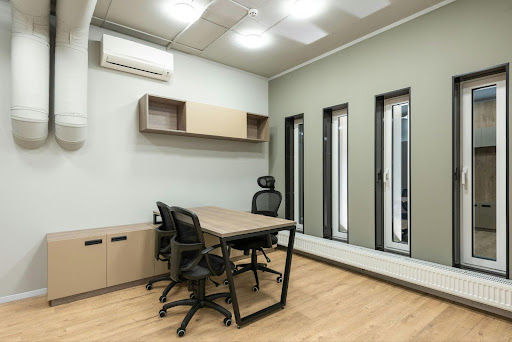Coastal homes promise peace, luxury, and escape. But behind the view hides a harsh reality. The mortgage is only the beginning. Surprise costs creep in—fast and unexpectedly. Insurance hikes, strict rules, endless maintenance costs. It adds up to more than you’d think.
If you’re intrigued by the coast, read this first. Know the truth before you hunt the dream.
Coastal Real Estate Ownership: Salt Air and Serenity
Having a home by the water sounds like a dream. Nothing can compete with waking up to the ocean. Sea breezes. Golden skies. Boats drifting by. Life feels slower. Calmer.
Bayfront condos offer all of that; and more. If you dream of mornings by the shore, explore these Ocean City bayfront listings. The views are real. So is the peace.
But there’s more to this story.
Salty air can be harsh. It degrades metal and weakens wood. It accelerates wear on HVAC systems, roofs, and pipes. Repairs can cost 30% more than inland homes, according to NOAA.
Seaside homes require additional maintenance. More inspections. More replacements.
For example, moisture causes mold. Sand damages paint and windows. Add in high winds and storms.
Still, people keep coming. The charm is timeless. Be aware of what to expect before making a purchase.
Coastal Property Ownership Cost: More Than Meets the Eye
Closing Costs
Closing costs can sneak up on every buyer out of the blue. They’re easy to miss but hard to ignore.
For coastal homes, the margins are 2% to 5% of the purchase price. On a $600,000 beach house, that’s $12,000 to $30,000. And requires upfront payment. A mix of lender fees, title insurance, appraisals, and taxes comes with it. You’ll find more details later in the article.
Now, lenders charge loan origination fees. It’s often 0.5% to 1% of the loan. That’s up to $6,000 alone.
You’ll also pay for flood zone certifications and special appraisals near water. These are not optional. FEMA requires flood zone information for a mortgage source.
Title insurance protects your legal ownership. It can cost $1,000 to $2,500 based on location. Coastal areas with complicated land records often fall into the high-end category.
Property Taxes
Homes by the ocean cost more. It’s the truth. That translates to higher taxes. In some states, coastal counties top the charts.
For example, New Jersey’s average property tax rate is 2.23%, the highest in the U.S. So, a $600,000 coastal home could cost you over $13,380 a year in taxes. [Source: New Jersey Department of the Treasury]
And it doesn’t end there.
If your home sits near a hazard zone, expect extra fees. These are used for erosion control, seawalls, or beach maintenance. In Florida, some counties apply additional assessments for hurricane prep and flood mitigation. [Source: Florida Department of Environmental Revenue]
Property Management
Owning coastal properties is mostly for vacation. Naturally, owners don’t always stick around them all year. That calls for hiring a manager to look after them.
But it’s not cheap in any way. Most companies charge 8% to 12% of monthly rental income. On a $3,000/month rental, that’s up to $360 every month. And that’s just the basics.
Don’t forget liability. Property managers must follow local and state rules. However, you still carry the risk if they don’t.
Management costs can spike for natural disaster-prone areas. FEMA reports that frequent calamities in coastal zones lead to more claims and repairs.
Regulatory Compliance
Coastal rules are strict. In fact, they are often overwhelming.
For any owner, changes, like fences, decks, or repairs need special permission. In some states, the law prohibits building within 50 to 250 feet of the shoreline. The NOAA’s Coastal Zone Management Program defines such rules across the U.S.
Again, remodeling is expensive. Many coastal cities follow FIRM maps to approve plans. Those maps are updated with rising seas in mind. That means your dream pool may get denied next year.
If your home is near dunes or wetlands, forget quick updates. You may need to involve state environmental boards like the California Coastal Commission.
Insurance
It’s no question that mortgages cost big. Insurance, however, hits harder than most people can expect.
As lavish as it is to live by the sea. It comes with terrifying threats. Storms, floods, and tornadoes can strike fast. And insurers are well aware of it.
Homeowners spend up to $10,000 per year for wind and flood insurance in coastal locations. That’s on top of regular home coverage. The National Association of Insurance Commissioners (NAIC) states that premiums are rising fast due to climate risks.
Then comes the flood insurance. It’s undeniable in FEMA high-risk zones. The National Flood Insurance Program (NFIP) found that the average cost is between $800 to $1000 per year. It can, however, be more for coastal homes.
Inspection
Coastal properties decay quickly due to salt, wind, and water. That is why a professional examination is recommended.
That said, $300 to $500 is needed for a basic inspection. However, charges for coastal houses might rise to $700 or more. Because the number of contributing factors is overwhelming. These include foundation erosion, salt air corrosion, and storm damage to roofs.
Maintenance

Coastal homes need more care than inland properties. Salt air, high winds, and moisture speed up wear and tear.
The average annual maintenance cost for a home is 1%–4% of its value (U.S. Bureau of Labor Statistics). For a $600,000 beach house, that’s $6,000–$24,000 each year.
Here’s what drains your wallet for coastal properties:
- Electrical Work: Salt air corrodes wires. Repairs cost $300–$500+ per call.
- Plumbing: Salt water corrodes the metal pipes. Rust hits fast, and it’s relentless. Re-piping can top $5,000.
- Pest Control: Warm, damp wood attracts termites. Treatment can start at a whopping $1,500.
- Mold: It’s a constant battle in seaside neighborhoods. Cleanup services can set you back for $500–$6,000+.
- Roof Repairs: Wind and salt shorten life. Coastal roofs need repair every 10–15 years.
- Lawn Care: Sand and sun kill grass. That’s why lawns require special attention. In seaside areas, landscaping costs 20–30% more.
- Driveway Damage: Salt and water crack surfaces faster. This is why many homes require yearly resealing.
Prepaid Bills
You must pay some bills in advance at the closing stage. They’re often non-negotiable. And yes, they can be huge amounts.
Let’s break it down.
Most homeowners pay insurance in advance for the first year. Depending on the danger level, this might range from $1,000 to $2,500 for coastal residences.
Property taxes are next on the list. Lenders frequently demand a 2-6 month advance payment into escrow. This may be $3,000–$6,000 upfront in high-tax coastal areas. [U.S. Census Bureau]
Then there is prepaid interest. This includes the interest from closing until your first mortgage payment. It varies, but it can easily reach $500–$1,000.
Just when you think it’s all over, HOA fees say hello. Some beachside communities need 3-6 months in advance. It adds up fast.
Summary
Coastal living is a dream for many. But hidden costs can make things complicated. It’s more than just the mortgage. Be smart and explore all possible expenses before you buy.












